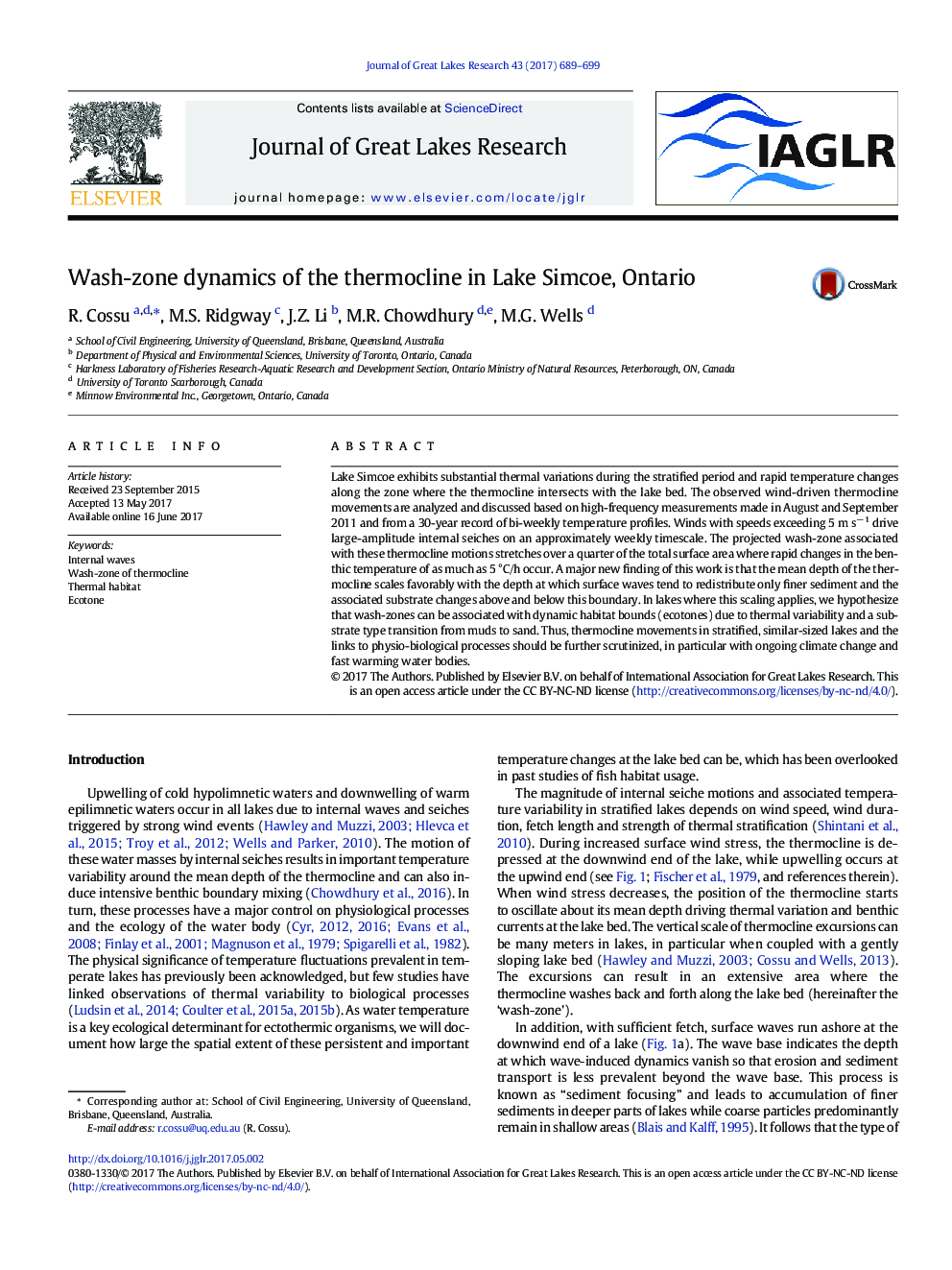| Article ID | Journal | Published Year | Pages | File Type |
|---|---|---|---|---|
| 5744646 | Journal of Great Lakes Research | 2017 | 11 Pages |
Lake Simcoe exhibits substantial thermal variations during the stratified period and rapid temperature changes along the zone where the thermocline intersects with the lake bed. The observed wind-driven thermocline movements are analyzed and discussed based on high-frequency measurements made in August and September 2011 and from a 30-year record of bi-weekly temperature profiles. Winds with speeds exceeding 5 m sâ 1 drive large-amplitude internal seiches on an approximately weekly timescale. The projected wash-zone associated with these thermocline motions stretches over a quarter of the total surface area where rapid changes in the benthic temperature of as much as 5 °C/h occur. A major new finding of this work is that the mean depth of the thermocline scales favorably with the depth at which surface waves tend to redistribute only finer sediment and the associated substrate changes above and below this boundary. In lakes where this scaling applies, we hypothesize that wash-zones can be associated with dynamic habitat bounds (ecotones) due to thermal variability and a substrate type transition from muds to sand. Thus, thermocline movements in stratified, similar-sized lakes and the links to physio-biological processes should be further scrutinized, in particular with ongoing climate change and fast warming water bodies.
